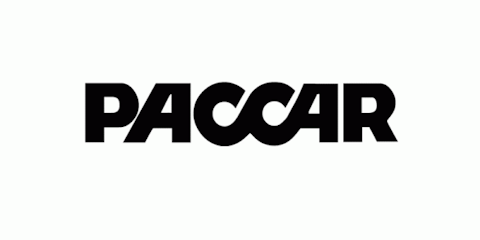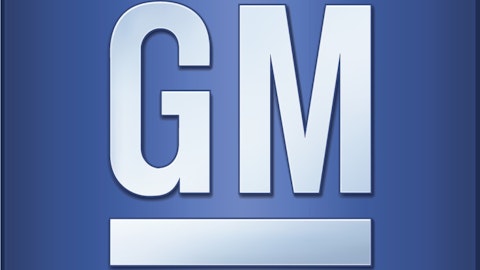What do you make of a situation when a company that dominates the heavy-duty natural-gas truck market in the U.S. says stuff about the gas that’s anything but exciting? A pin-popping balloon? Quite like, especially after the hullabaloo President Obama’s re-election as POTUS has created over the fuel.
I follow companies like PACCAR Inc (NASDAQ:PCAR) and Cummins Inc. (NYSE:CMI) closely and never miss either’s earnings release, not for numbers as much as for what they have to say about how things are shaping up in the natural-gas fuel market. Both companies have huge stakes in this space, so naturally, their views are important. While Cummins is yet to report numbers (as of this writing), PACCAR seems to be low on gas right now, and seems to be focusing on some other fuel instead.

40% of the heavy-duty trucks that run on gas in the U.S. today belong to PACCAR. Now that’s a huge competitive advantage to have in an area that’s getting increased attention. Interestingly, many are pegging heavy-duty and long haul trucks to make a major headway into natural gas in 2013, and that includes the innovator that has mastered the art of enabling gasoline engines to run on natural gas — Westport Innovations Inc. (USA) (NASDAQ:WPRT).
Westport forecasts as many as 16 truck models from various companies to opt for its new natural-gas engine this year. PACCAR itself decided to fix two of its latest truck models under brands Peterbilt and Kenilworth with the heavy-duty ISX 12G engine last year. This engine is one of the most advanced products to be launched by Westport in collaboration with Cummins under their 50:50 joint venture, and is expected to go into full production soon (Cummins’ forthcoming earnings call should provide updates on this). Westport has high hopes from this new engine, and is confident it will be a huge hit. Obviously, it counts PACCAR as an important customer. But wait: the customer doesn’t sound as upbeat.
The unexpected?
When an analyst asked PACCAR’s management whether it really sees long-haul trucks making headway into natural gas this year, this is what he got for a reply:
If the infrastructure and a major company, whether it’s in the resource industry or somebody else, makes a(n) investment to allow online, highway, natural gas trucks, we’re ready for that. That’s all we can do. We’re ready. We’re the leader. So we’re excited about it. But until that happens, we’ll continue to sell to people that have other requirements in the industry, which is diesel. It’s a wonderful fuel and it’s very productive.”
So PACCAR doesn’t really see trucks taking off on gas unless infrastructure builds up for support. Not this year, at least. Is Westport listening?
What about diesel? PACCAR sounded pretty excited about it. Curiosity fired, I brought out my search glasses when I chanced upon this piece from Forbes, according to which sales of diesel vehicles shot up almost 28% during the first six months of 2012. Good news, but the article also mentions another interesting fact — only one commercial vehicle seems to be better off when run on diesel instead of gas in terms of cost savings.
Ironically, even the loner on the list – Ford Motor Company (NYSE:F)’s F-series pick-up –is giving gas a harder push. The auto maker’s truck sales were up 7% in 2012, and it has just pitched two more pick-ups with Westport’s WiNG Power System that enables a gasoline truck to run on gas. The immensely-popular F-series continue to be “America’s best-selling pickup,” and also happen to be Ford’s profit machines.
There are other articles that suggest diesel cars are on the rise, but note, they talk almost only about passenger cars, and there’s hardly a word about trucks. Ahem, PACCAR’s 100% about commercial vehicles. So where is the diesel demand coming from? Global markets seem to be the probable answer.
More takers than you think
Take India, for instance. Despite the government’s initiative to free diesel price regulations, demand for the fuel is expected to rise more than 8% this financial year. Even the world’s cheapest car, Nano, will soon be available on diesel as its maker TataMotors strives to regain lost market share. This follows the launch of a diesel-variant hatchback of its popular small car Indica. According to a Business Standard report, 70% of Tata’s sales come from diesel cars. India undoubtedly is a great opportunity for PACCAR which is trying to make a mark in the market with its DAF trucks.
China is an equally big story, with diesel constituting 37% of its oil market. DAF already holds the second position in the Taiwan heavy-duty (15 tonne and above) market; and PACCAR is expanding operations further. As for Brazil, the company will begin producing DAF trucks this year as it aims to up its market share in South America to 20% over the next few years from the current 5% share.
The Foolish bottom line
The debate boils down to two facts – One, lack of infrastructure remains the biggest roadblock for natural-gas fuel, and 2013 might turn out to be a damp squib for hopeful gas-engine players, especially those betting on trucks (think Westport). Two, diesel is still in high demand in several important markets of the world.
And what does this mean for PACCAR? It might find the growth in the nat-gas fuel market painfully slow, but as an established player, PACCAR will also be the one of the first to enjoy the revolution once it kicks off. Meanwhile, it can keep itself busy meeting diesel demands from other customers. So PACCAR investors needn’t worry much, especially after the way it ended 2012 with record revenue of $17 billion and 9% growth in earnings per share.
The article Are We Going Overboard With the Natural Gas Hype? originally appeared on Fool.com and is written by Neha Chamaria.
Copyright © 1995 – 2013 The Motley Fool, LLC. All rights reserved. The Motley Fool has a disclosure policy.



